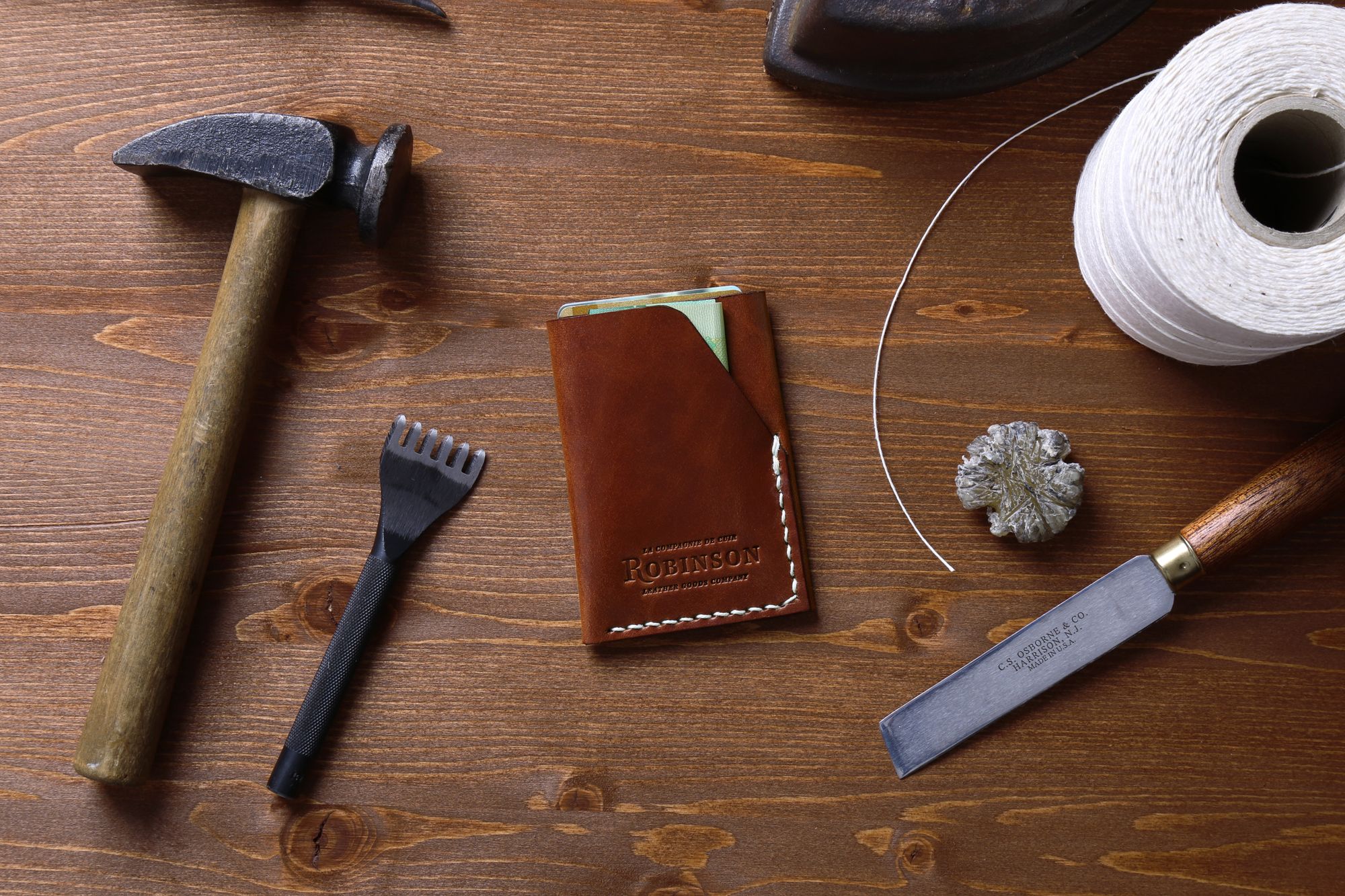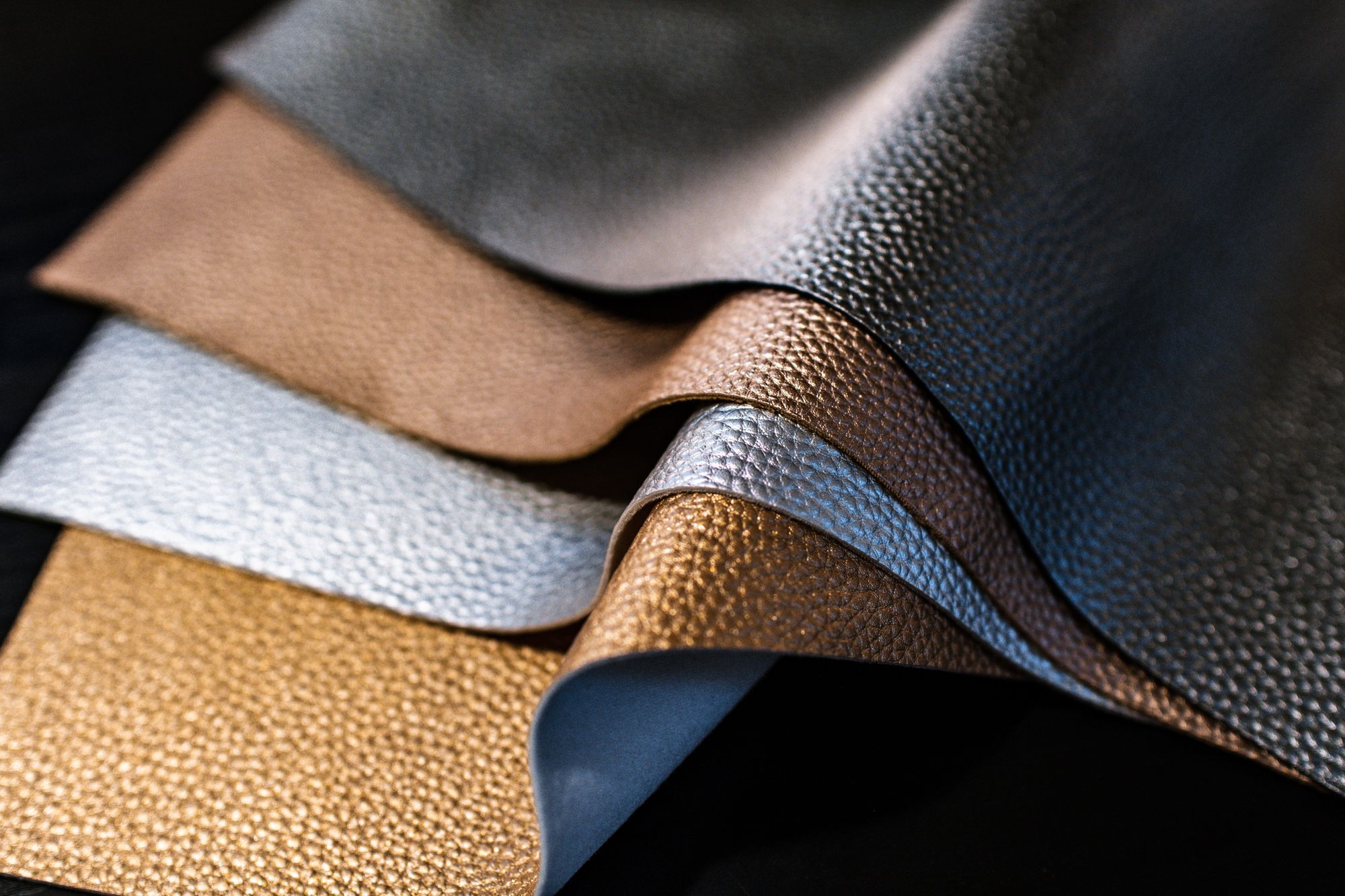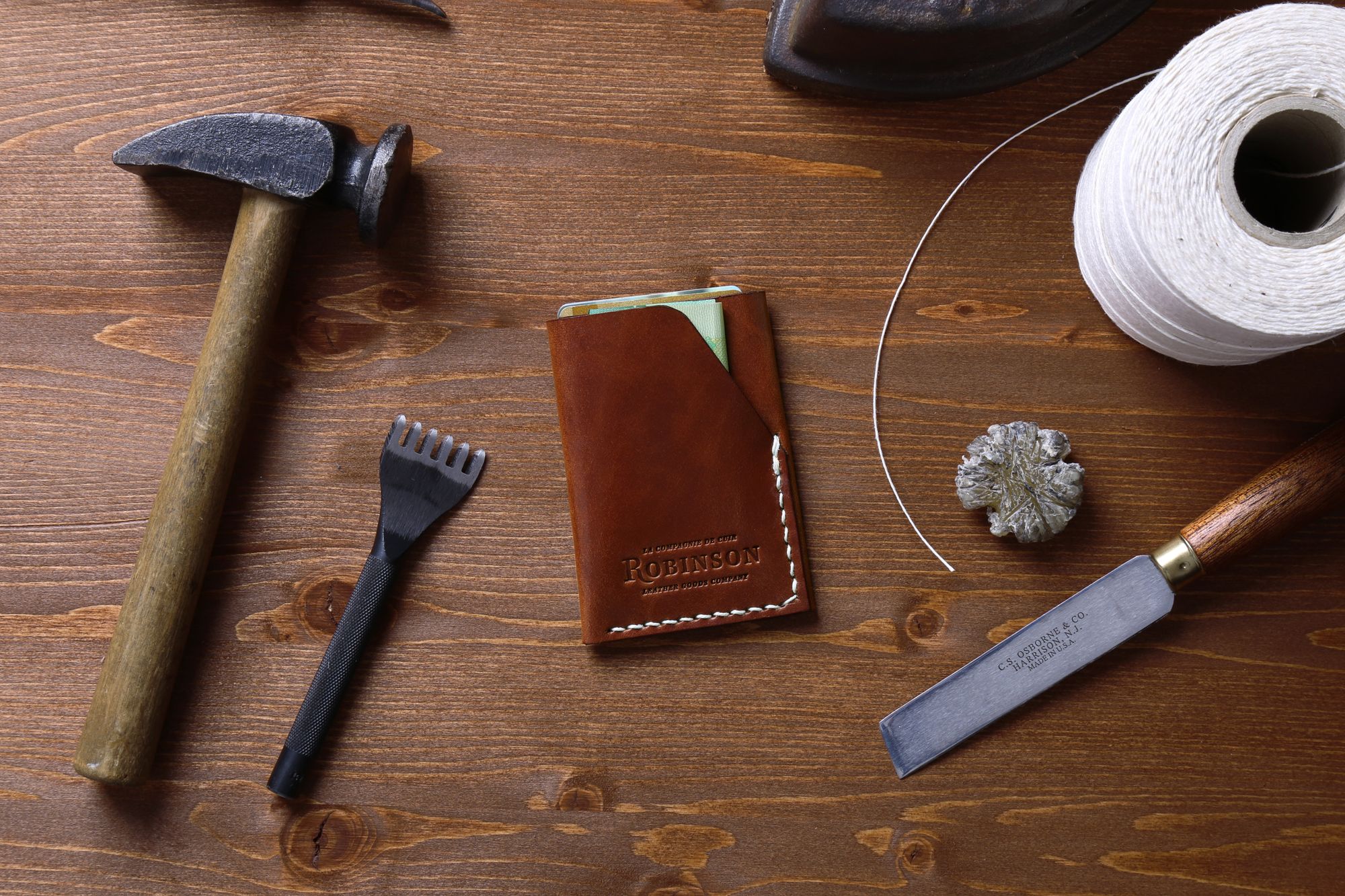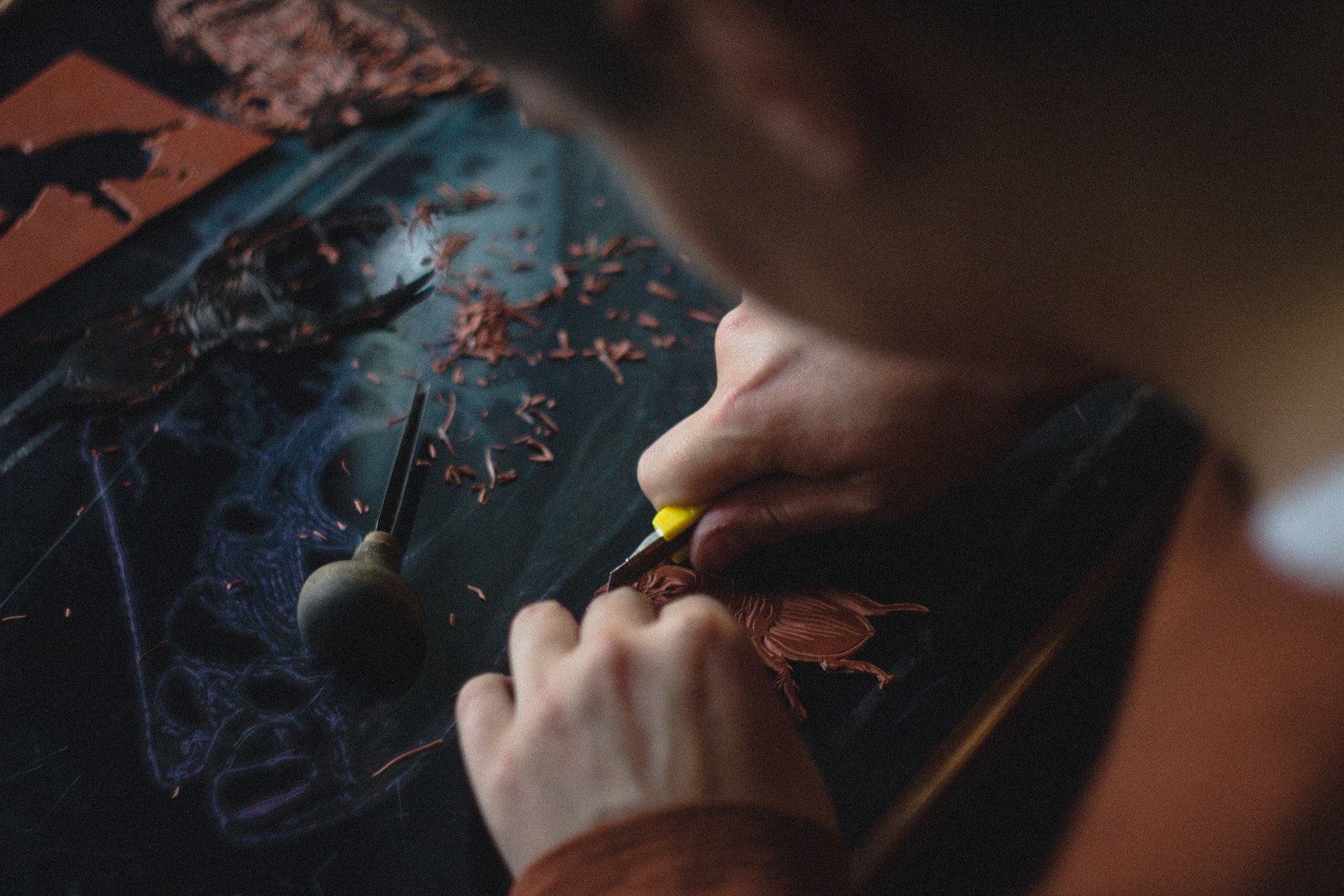The global leather goods market size was valued at USD 414.3 billion in 2020 and is expected to grow at a compound annual growth rate (CAGR) of 5.5% from 2021 to 2028. (Source: Grand View Research)
This statistic highlights the ever-increasing demand for leather products and, therefore, the increasing need for leather manufacturers. In fact, leather has been used for thousands of years, and the leather industry continues to play a significant role in the global economy.

Leather manufacturing is the process of converting animal hides and skins into leather, a durable and flexible material used for various applications such as clothing, footwear, furniture, and automotive interiors.
The leather manufacturing process involves several stages, including preparation of hides and skins, tanning, dyeing, finishing, cutting, and sewing.
While leather manufacturing presents various challenges, such as environmental concerns and ethical issues related to animal welfare, the industry is continuously evolving to improve sustainability and address these challenges.
With advancements in technology and increasing demand for eco-friendly leather, the leather manufacturing industry is poised for further growth and innovation.
Thus, considering the complexities and dynamics involved in the leather manufacturing industry, it is crucial to have a complete understanding of the leather manufacturing process to ensure higher net revenue and net profit ratio.
This article will help you thereby covering the following topics:
- What is Leather Manufacturing?
- Leather Manufacturing Process: How Leather is Made?
- How to Ensure Quality Control in the Leather Manufacturing Process?
- Challenges Associated with the Leather Manufacturing Process
- Opportunities Associated with the Leather Manufacturing Process
- Areas of Improvement in the Leather Manufacturing Process
- How have Technological Advancements Affected the Leather Manufacturing Process?
- Role of Automation in the Leather Manufacturing Process
- Ensuring Sustainability in the Leather Manufacturing Process
- New Trends in the Leather Manufacturing Process
- FAQs related to the Leather Manufacturing
- How can Deskera Help with Leather Manufacturing?
- Key Takeaways
- Related Articles
What is Leather Manufacturing?
Leather manufacturing is the process of converting raw animal hides or skins into finished leather products. The process includes several steps, such as cleaning, tanning, dyeing, and finishing, to transform the raw material into a usable product.
This involves several stages, including cleaning, tanning, dyeing, and finishing, which are all aimed at turning the raw material into a usable, durable, and attractive product.
Leather is a versatile material that is used to make a wide range of products, such as clothing, footwear, bags, accessories, furniture, and automotive interiors. The leather manufacturing process can be complex and require specialized knowledge and equipment to produce high-quality products that meet industry standards.
The process can be environmentally intensive and involves the use of chemicals, so it's important to ensure that proper safety measures and environmental regulations are followed.
It is important to note that the leather industry has been criticized for its environmental impact, and there are efforts underway to develop more sustainable and responsible practices.
Leather Manufacturing Process: How Leather is Made?
Leather is manufactured through a process that involves several stages. Here is a general overview of the leather manufacturing process:
Preparing the Hides or Skins
Preparing the hides or skins is the first step in the leather manufacturing process. Here are the steps involved:
- Soaking: The hides or skins are soaked in water to remove dirt, blood, and any other impurities. This also helps to soften the hides and prepare them for the next stage.
- Liming: The hides or skins are treated with lime or other alkaline substances to remove the hair, flesh, and fat. This process can take several days and involves stirring the hides in large vats of lime and water.
- Deliming: After the liming process is complete, the hides are washed to remove any excess lime and other chemicals.
- Bating: The hides are treated with enzymes to further soften and prepare them for the tanning process.
- Pickling: The hides are treated with a solution of salt and acid to help preserve them and prepare them for the tanning process.
Once the hides or skins have been prepared, they are ready for the tanning process, which involves treating them with chemicals to make them durable and resistant to decay. Different tanning methods can be used, depending on the desired properties of the leather.
Tanning
Tanning is the process of treating the prepared hides or skins with chemicals to make them durable and resistant to decay. There are several methods of tanning used in the leather manufacturing process, including:
- Vegetable tanning: This is the oldest and most traditional method of tanning. It involves using tannins extracted from tree bark or other plant sources to tan the hides. This process can take several weeks or even months and results in leather that is stiff and has a natural, earthy color.
- Chrome tanning: This is the most common method of tanning used today. It involves using chromium salts for tanning the hides, which is a faster process than vegetable tanning. Chrome tanning produces leather that is soft, supple, and has a wide range of colors.
- Synthetic tanning: This method involves using synthetic tanning agents to tan the hides. It is a relatively new method that is gaining popularity due to its speed and efficiency.
The tanning process involves several stages, including:
- Pre-tanning: This involves treating the hides with a solution of salt and acid to prepare them for the tanning process.
- Tanning: The hides are treated with the tanning agent, which penetrates the fibers and makes the leather durable and resistant to decay.
- Neutralizing: The hides are washed to remove any excess tanning agent and restore the pH balance.
- Finishing: The tanned leather is then finished with various processes, including dyeing, buffing, and coating with waxes or oils, to enhance its appearance, texture, and durability.
Tanning is a critical stage in the leather manufacturing process and requires specialized knowledge and equipment to produce high-quality leather products.
Dyeing
Dyeing is the process of coloring the leather to achieve the desired hue. Dyeing can be done at different stages of the leather manufacturing process, such as before or after tanning, and can be achieved using a variety of techniques, such as immersion dyeing, spraying, and hand painting.
Here are the general steps involved in the dyeing process for leather manufacturing:
- Preparation: The leather is cleaned, and any finishing agents or coatings are removed to prepare it for dyeing.
- Coloring: The dye is applied to the leather using a variety of methods, such as spraying, immersion dyeing, or hand painting. The type of dye used can vary, such as acid dyes, direct dyes, or reactive dyes.
- Penetration: The leather is allowed to absorb the dye, and the dye penetrates into the fibers to create a permanent color.
- Fixation: The leather is treated with a fixative, such as heat, to set the dye and ensure it does not bleed or fade.
- Finishing: The dyed leather is finished with various processes, including buffing, polishing, and coating with waxes or oils, to enhance its appearance, texture, and durability.
The dyeing process requires specialized knowledge and equipment to produce high-quality leather products with even color and coverage. Care must also be taken to ensure that the dyeing process is environmentally responsible and does not harm workers or the environment.
Finishing
Finishing is the final stage of the leather manufacturing process, which involves various processes to enhance the appearance, texture, and durability of the leather. Here are some of the techniques used in the finishing stage:
- Buffing: The surface of the leather is sanded or buffed to create a smooth and even texture. This also helps to remove any imperfections or blemishes.
- Embossing: The leather is stamped with a pattern or design to create a textured surface. This can be done by using a heat press or rollers with engraved designs.
- Coating: A protective coating, such as wax or oil, is applied to the leather to increase its resistance to water, stains, and scratches. This can also enhance the leather's appearance and give it a glossy or matte finish.
- Dyeing: As mentioned earlier, dyeing can also be done at the finishing stage to enhance the leather's color and appearance.
- Polishing: The leather is polished to create a shiny surface and to remove any marks or scratches.
- Edge finishing: The edges of the leather, such as those on belts or bags, are finished with various techniques, such as burnishing, painting, or bevelling, to give them a smooth and even appearance.
The finishing stage is crucial in creating high-quality leather products that meet the desired standards of appearance, texture, and durability. The techniques used in finishing vary depending on the type of leather and the intended use of the finished product.
Cutting and Sewing
Cutting and sewing are critical stages in the leather manufacturing process that involves cutting the leather into the desired shapes and sewing them together to create the final product. Here are some of the techniques used in cutting and sewing:
- Cutting: The leather is first cut into the desired shape using a pattern, which is either traced onto the leather or created using a computer-aided design (CAD) system. The leather can be cut using various tools, such as knives, scissors, or laser cutters.
- Skiving: Skiving is a process of thinning the leather at the edges to create a more even thickness and reduce bulk. This is typically done using a skiving machine or a handheld skiving knife.
- Stitching: The leather pieces are sewn together using specialized sewing machines designed for leather. The stitching can be done using various techniques, such as saddle stitching or lock stitching, and using different types of thread, such as polyester, nylon, or waxed thread.
- Finishing: After the leather pieces are sewn together, the product is finished with various techniques, such as burnishing, edge painting, or adding hardware, such as zippers or buckles.
Cutting and sewing leather requires specialized equipment and skills to ensure the final product meets the desired standards of quality, durability, and appearance. The techniques used in cutting and sewing vary depending on the type of leather, the product being created, and the intended use of the finished product.
How to Ensure Quality Control in the Leather Manufacturing Process?
Quality control is a crucial aspect of the leather manufacturing process to ensure that the final product meets the desired standards of quality, durability, and appearance. Here are some of the techniques used in quality control in leather manufacturing:
- Raw material inspection: The quality control process begins with inspecting the raw materials, such as hides or skins, to ensure they meet the required quality standards. Any defective hides or skins are rejected, and only high-quality ones are used for production.
- Testing: Various tests are performed during the leather manufacturing process to ensure that the leather meets the required quality standards. These tests can include checking the strength, durability, and colorfastness of the leather.
- Quality checkpoints: Quality checkpoints are set up throughout the manufacturing process to monitor the quality of the leather at various stages of production. Any defects or issues are identified and addressed before they can affect the final product.
- Standard operating procedures: Standard operating procedures (SOPs) are developed and implemented to ensure that the manufacturing process is consistent and meets the desired quality standards. These SOPs cover every aspect of the manufacturing process, from the raw material inspection to the final product inspection.
- Employee training: Proper training of employees is critical in ensuring quality control in the manufacturing process. Employees are trained on the proper techniques and procedures to ensure that the leather meets the required quality standards.
- Final product inspection: Before the final product is shipped, a final inspection is performed to ensure that it meets the required quality standards. Any defects or issues are addressed before the product is shipped to the customer.
By implementing these techniques, leather manufacturers can ensure that their products meet the required quality standards and provide their customers with high-quality, durable, and visually appealing leather products. This will improve customer retention, customer loyalty, as well as your cash flow.
Challenges Associated with the Leather Manufacturing Process
The leather manufacturing process is a complex process that involves various stages and requires specialized skills and equipment. Here are some of the challenges associated with the leather manufacturing process:
- Environmental impact: The leather manufacturing process can have a significant impact on the environment. The chemicals used in the tanning process can pollute the water and soil if not disposed of properly. The leather industry is taking steps to reduce its environmental impact by adopting sustainable practices, such as using eco-friendly chemicals and reducing waste.
- Cost: The cost of leather manufacturing can be high due to the specialized equipment and skilled labor required. The price of leather products can also be affected by the cost of raw materials, which can fluctuate depending on availability and demand.
- Quality control: Ensuring quality control throughout the manufacturing process can be challenging. Leather is a natural material that can vary in quality and consistency, making it challenging to ensure that the final product meets the required quality standards.
- Supply chain management: The leather manufacturing process involves multiple stages and requires coordination between various suppliers, tanners, and manufacturers. Managing the supply chain can be challenging, particularly when dealing with international suppliers and manufacturers.
- Competition: The leather industry is highly competitive, with many manufacturers and suppliers vying for market share. Competing on price, quality, and innovation can be challenging, particularly for small manufacturers and suppliers.
- Changing consumer preferences: Consumer preferences are constantly evolving, and manufacturers must adapt to these changes to remain competitive. For example, there is a growing demand for sustainable and ethically sourced leather, which has led to a shift towards eco-friendly and ethical practices in the leather industry.
By addressing these challenges and adopting sustainable and innovative practices, leather manufacturers can overcome these challenges and continue to produce high-quality leather products that meet the changing needs and preferences of consumers.
Opportunities Associated with the Leather Manufacturing Process
Despite the challenges, there are also several opportunities associated with the leather manufacturing process. Here are some of the opportunities:
- Innovation: The leather industry is ripe for innovation. There are opportunities to develop new products and processes that can improve the quality, durability, and sustainability of leather products. This includes developing new materials, using advanced technologies, and implementing eco-friendly and ethical practices.
- International trade: The leather industry is a global industry with many opportunities for international trade. Manufacturers can tap into new markets and expand their customer base by exporting their products to different countries. This can be facilitated by free trade agreements and favorable trade policies.
- Customization: Consumers are increasingly demanding personalized and customized products. The leather industry can capitalize on this trend by offering customized leather products, such as custom-made leather jackets, bags, and shoes. This can create new revenue streams and increase customer loyalty.
- Sustainable practices: There is a growing demand for sustainable and eco-friendly leather products. Manufacturers can capitalize on this trend by adopting sustainable practices, such as using eco-friendly chemicals, reducing waste, and sourcing ethical and sustainable raw materials. This can not only appeal to environmentally conscious consumers but also reduce production costs and increase efficiency.
- Vertical integration: Manufacturers can benefit from vertical integration by owning and controlling multiple stages of the production process. This includes owning tanneries, manufacturing facilities, and retail outlets. This can reduce costs, increase efficiency, and provide greater control over the quality and consistency of the final product.
By capitalizing on these opportunities, the leather industry can continue to grow and thrive while meeting the changing needs and preferences of consumers.
Areas of Improvement in the Leather Manufacturing Process
There are several areas of improvement in the leather manufacturing process that can help address the challenges faced by the industry and capitalize on the opportunities available. Here are some of the key areas of improvement:
- Sustainable practices: The leather industry can improve its environmental impact by adopting more sustainable practices. This includes using eco-friendly chemicals in the tanning process, reducing waste, and sourcing raw materials from ethical and sustainable sources.
- Quality control: Ensuring consistent quality throughout the manufacturing process is essential to producing high-quality leather products. Improving quality control measures can help identify and address issues before they impact the final product.
- Technology adoption: The leather industry can benefit from adopting new technologies, such as automation, machine learning, and robotics. These technologies can help improve efficiency, reduce costs, and enhance the quality and consistency of the final product.
- Supply chain management: Improving supply chain management can help reduce costs, improve efficiency, and increase transparency. This includes better coordination between suppliers, tanners, and manufacturers, as well as implementing tools for tracking and monitoring the supply chain.
- Workforce development: Investing in workforce development can help ensure that the industry has the skills and expertise needed to succeed. This includes training programs for workers, as well as incentives to attract and retain top talents and skilled workers.
- Innovation: The leather industry can benefit from continuous innovation in product design, materials, and production processes. This includes developing new products, using advanced materials, and adopting new manufacturing techniques.
By improving these areas, the leather industry can address the challenges it faces, capitalize on opportunities for growth, and continue to produce high-quality leather products that meet the changing needs and preferences of consumers.
How have Technological Advancements Affected the Leather Manufacturing Process?
Technological advancements have significantly impacted the leather manufacturing process over the years. Here are some ways in which technology has affected the industry:
- Automation: Automation has revolutionized the leather industry by reducing the need for manual labor and increasing efficiency. Automated machines and robots are used in various stages of leather production, including cutting, stitching, and finishing.
- Digitalization: Digitalization has enabled leather manufacturers to streamline their processes, reduce costs, and improve quality control. Digital technologies are used to monitor and control the tanning process, track inventory, and manage the supply chain.
- Innovative materials: Technology has enabled the development of new materials that can be used in leather production. For example, new materials like microfiber and synthetic leather can be produced with advanced technologies that offer superior durability and eco-friendliness compared to traditional leather.
- Eco-friendly processes: Advanced technologies have enabled the development of eco-friendly tanning processes, such as chrome-free tanning and vegetable tanning. These processes help reduce the environmental impact of leather production.
- Augmented reality and virtual reality: Leather manufacturers can use augmented reality and virtual reality technologies to showcase their products and provide customers with an immersive shopping experience. This technology can help manufacturers showcase their products in a more interactive and engaging way.
Overall, technological advancements have improved the efficiency, sustainability, and quality of the leather manufacturing process. By leveraging these technologies, manufacturers can continue to produce high-quality leather products while meeting the changing needs and preferences of consumers.
Role of Automation in the Leather Manufacturing Process
Automation plays a significant role in the leather manufacturing process. It has revolutionized the industry by reducing the need for manual labor and increasing efficiency. Here are some specific ways in which automation is used in the leather manufacturing process:
- Cutting: Automated cutting machines are used to cut leather hides and skins into specific shapes and sizes. These machines can be programmed to cut multiple layers of leather at once, reducing the time and labor required for the cutting process.
- Stitching: Automated stitching machines are used to sew leather pieces together. These machines can be programmed to sew different types of stitches and patterns, reducing the need for manual labor.
- Finishing: Automated machines are used to apply finishing touches to leather products, such as polishing and buffing. These machines can be programmed to apply consistent pressure and speed, ensuring a uniform finish on each product.
- Quality control: Automated machines and sensors are used to monitor the quality of leather products throughout the manufacturing process. These machines can detect defects and imperfections, allowing manufacturers to address issues before they impact the final product.
- Inventory management: Automated inventory management systems are used to track and manage raw materials, finished products, and supplies. These systems can provide real-time updates on inventory levels, reducing the risk of stockouts and overstocking.
By using automation in the leather manufacturing process, manufacturers can improve efficiency, reduce costs, and enhance the quality and consistency of the final product. Automation also helps reduce the risk of human error and improves workplace safety by reducing the need for manual labor.
Overall, automation plays a critical role in the leather manufacturing process, enabling manufacturers to produce high-quality products efficiently and cost-effectively.
Ensuring Sustainability in the Leather Manufacturing Process
Sustainability is becoming increasingly important in the leather industry, and there are several ways that manufacturers can ensure sustainability in their production processes.
Here are some ways to achieve sustainability in the leather manufacturing process:
- Reduce water usage: The leather manufacturing process requires a significant amount of water. By implementing water-efficient technologies and practices, manufacturers can reduce the amount of water used in the tanning process. This can include recycling wastewater, using closed-loop water systems, and implementing water-efficient technologies like reverse osmosis and nanofiltration.
- Use eco-friendly chemicals: The chemicals used in the tanning process can have a significant impact on the environment. By using eco-friendly chemicals like vegetable tannins instead of synthetic chemicals, manufacturers can reduce their environmental impact and produce more sustainable leather.
- Reduce energy consumption: The leather manufacturing process requires a lot of energy. By implementing energy-efficient technologies and practices, such as using solar or wind power, manufacturers can reduce their energy consumption and carbon footprint.
- Reduce waste: The leather manufacturing process generates a significant amount of waste, including scraps of leather and chemicals. Manufacturers can reduce waste by implementing recycling and reuse programs, minimizing waste during production, and adopting a circular economy approach.
- Implement ethical and social responsibility practices: Manufacturers can ensure sustainability by implementing ethical and social responsibility practices, such as ensuring fair labor practices, minimizing the use of hazardous chemicals, and protecting the rights of animals.
By implementing sustainable practices in the leather manufacturing process, manufacturers can reduce their environmental impact, improve their social responsibility, and meet the growing demand for sustainable products. It is important for manufacturers to continuously assess and improve their sustainability practices to ensure that they are meeting the changing needs and expectations of consumers and stakeholders.
New Trends in the Leather Manufacturing Process
The leather manufacturing industry is constantly evolving, and there are several new trends emerging in the manufacturing process. Here are some of the new trends in leather manufacturing:
- Use of sustainable materials: There is an increasing demand for sustainable materials in the leather industry. Manufacturers are using alternative materials, such as pineapple leather, mushroom leather, and recycled leather, to produce more sustainable products.
- Digitalization and automation: Digitalization and automation are transforming the leather manufacturing process. Manufacturers are using artificial intelligence, machine learning, and automation to streamline production, improve quality control, and reduce waste.
- Customization: Consumers are increasingly looking for personalized and customized products. Manufacturers are using digital technologies to offer more customization options, such as personalized colors, textures, and patterns.
- Collaborative innovation: Collaborative innovation is becoming more prevalent in the leather industry. Manufacturers are working with designers, brands, and consumers to develop new materials, technologies, and production processes.
- Circular economy: The circular economy approach is gaining traction in the leather industry. Manufacturers are adopting closed-loop production processes, using recycled materials, and implementing recycling and reuse programs to minimize waste and reduce their environmental impact.
Overall, these new trends in leather manufacturing are driven by the need to meet the changing demands and expectations of consumers and stakeholders, as well as the need to adopt more sustainable and efficient production practices.
FAQs related to the Leather Manufacturing
- What are the different types of tanning methods used in leather manufacturing?
The different types of tanning methods include vegetable tanning, chrome tanning, and synthetic tanning.
- What are the environmental concerns associated with leather manufacturing?
Leather manufacturing can have significant environmental impacts, such as water pollution, waste generation, and energy consumption.
- How can manufacturers ensure quality control in the leather manufacturing process?
Manufacturers can ensure quality control by implementing quality management systems, conducting regular inspections and testing, and using high-quality materials and equipment.
- How can leather products be recycled?
Leather products can be recycled by using them as a source of energy, reusing them in other products, or recycling them into new products.
- What are the benefits of using eco-friendly chemicals in leather manufacturing?
Using eco-friendly chemicals can reduce the environmental impact of leather manufacturing, minimize waste, and produce more sustainable products.
- What role does automation play in leather manufacturing?
Automation can improve efficiency, productivity, and quality control in leather manufacturing, as well as reduce environmental impact and labor costs.
- How can leather manufacturers ensure sustainability in their production processes?
Leather manufacturers can ensure sustainability by reducing water usage, using eco-friendly chemicals, reducing energy consumption, reducing waste, and implementing ethical and social responsibility practices.
- What are some of the latest trends in leather manufacturing?
Some of the latest trends in leather manufacturing include the use of sustainable materials, digitalization and automation, customization, collaborative innovation, and the circular economy.
- How can leather products be cared for and maintained?
Leather products should be stored in a cool, dry place away from direct sunlight, cleaned regularly with a soft cloth or brush, and treated with a leather conditioner to prevent drying and cracking.
How can Deskera Help with Leather Manufacturing?
Deskera is a cloud-based business management software that can help leather manufacturers streamline their operations, increase efficiency, and improve productivity.
Here are some ways Deskera can help with leather manufacturing:
- Inventory Management: Deskera MRP can help leather manufacturers keep track of their raw materials, finished products, and supplies, ensuring that they have the right materials available at the right time.
- Sales and Purchase Management: Deskera CRM can help leather manufacturers manage their sales and purchase orders, quotations, invoices, and payments, ensuring that they have a clear view of their transactions.
- Quality Control: Deskera MRP can help leather manufacturers ensure that their products meet the required quality standards by setting up quality checks and inspections throughout the manufacturing process.
- Production Planning: Deskera MRP can help leather manufacturers plan and schedule their production processes, ensuring that they can meet their customer demands on time.
- Accounting and Financial Management: Deskera Books can help leather manufacturers manage their finances, track their expenses, and generate financial reports, ensuring that they have a clear view of their financial health.
- Mobile Access: Deskera's mobile app can allow leather manufacturers to manage their business operations on the go, enabling them to stay connected with their business even when they are away from their desks.
Key Takeaways
Leather manufacturing is the process of converting raw animal hides or skins into finished leather products. The process includes several steps, such as:
- Preparing the hides or skins: The first step involves cleaning and removing any unwanted substances from the raw hides or skins. This can include fleshing, which removes the remaining flesh and fat, and dehairing, which removes the hair or wool.
- Tanning: Tanning is the process of treating the cleaned hides or skins with chemicals to make them durable and resistant to decay. There are several methods of tanning, including vegetable tanning, chrome tanning, and synthetic tanning.
- Dyeing: After the tanning process, the leather can be dyed to achieve the desired color. Different dyes and pigments can be used to create a wide range of colors and effects.
- Finishing: Once the leather has been tanned and dyed, it is finished to enhance its appearance, texture, and durability. Finishing processes can include buffing, sanding, embossing, and coating with various chemicals or waxes.
- Cutting and sewing: The finished leather is then cut into patterns and sewn together to create various leather products, such as shoes, jackets, bags, and belts.
The steps for ensuring quality control in the leather manufacturing process are:
- Raw material inspection
- Testing
- Quality checkpoints
- Standard operating procedures
- Employee training
- Final product inspection
The challenges associated with the leather manufacturing process are:
- Environmental impact
- Cost
- Quality control
- Supply chain management
- Competition
- Changing consumer preferences
The opportunities associated with the leather manufacturing process are:
- Innovation
- International trade
- Customization
- Sustainable practices
- Vertical integration
The areas of improvement in the leather manufacturing process are:
- Sustainable practices
- Quality control
- Technology adoption
- Supply chain management
- Workforce development
- Innovation
Overall, Deskera can help leather manufacturers improve their business operations, reduce costs, and increase their profitability by providing them with the tools they need to manage their businesses more efficiently.
Related Articles











